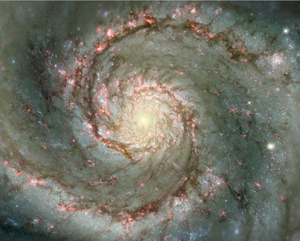The Life And Death Of Stars
Introduction
When I heard the learned astronomer,
When the proofs, the figures were ranged in columns before me,
When I was shown the charts and diagrams,
to add, divide, and measure them,
When I sitting heard the astronomer where he lectured
with much applause in the lecture-room,
How soon unaccountable I became tired and sick,
Till rising and gliding out I wandered off by myself
In the mystical moist night air,
and from time to time
Looked up in perfect silence at the stars.
Walt Whitman
Mr. Whitman's plight is all too familiar to the layman who has searched the internet for information about astronomy. It is easy to find sites of the "Gee, Wow" variety, filled with spectacular photographs and also science so spectacularly watered-down that it is suitable only for Dummies. And it is nearly as easy to find college-level lecture notes, complete with the solutions to detailed mathematical homework problems.
I have been teaching physics and astronomy at Northwestern University since 1989 (thus I qualify as the "learned astronomer" in the poem), and I felt that surely there was room on the web for a few pages situated firmly between these extremes. This site is the result. It discusses the evolution of stars at a detailed yet easy to understand level. Frankly, this site is not meant to be browsed. It is meant to be read. Browsing is fine if you just want a few factoids, but if you actually want to understand a subject then you need to study it from start to finish, and understanding is what this website is about. I am a teacher. I am not a quiz-show host. This website is laden with footnotes and links that you can skip if you wish, but which provide much-needed detail and discussion at just the time when you need it. You can read only the main narrative, and get the gist of the information, or also read all of the asides and be ready to fake your way through a poster session at the next Annual Meeting of the Astrophysical Society of the Pacific. The choice is yours.
Throughout this site, I have adhered to the principle that there is a big difference between simplified and simple. I have tried very hard not to repeat some of the tired cliches of popular astronomy here, not because they are cliches, but because they are just plain wrong. Simplification is fine, but when it gets to the point that the simplicity is simple-minded rather than simple, it is time to start talking details, and I do.
So much for the introduction; let's start talking about astrophysics! Go To First Page
David Taylor
Evanston, IL
June, 2012
d-taylor2@northwestern.edu
For a translation of this page into other languages, click a link below.
Arabic, Croatian, Estonian, Finnish, Georgian, Hungarian, Indonesian, Italian, Kazakh, Macedonian, Norwegian, Polish, Romanian, Spanish, Thai, Turkish, Uzbek

(Token Beauty Photo)
Introduction
Matter Under Pressure
The Birth Of The Sun
The Sun's Evolution
The End Of The Sun
How Large Stars Evolve
The Other Type Of Supernova
After The Supernova
Links
Return to David Taylor's Science Essays Homepage